On the road : the wandering Wirth family
By Simon Miller, Library Technician, State Library of Queensland | 30 May 2013
Fifty years ago, in Brisbane, in May 1963, the final performance of Wirths' Circus marked the end of a fascinating chapter in Australian entertainment history. The Wirth family had been entertaining audiences all over Australia for over 100 years, first as musicians, then as circus performers and managers.
The first generation of Wirth brothers came to Australia around 1856. They came from the Rhineland-Palatinate region of Germany, a region that became famous from the early 19th century for its bands of wandering musicians. The area struggled to support its growing population with limited opportunities for farming and quarrying but they discovered that there was good money to be made as travelling musicians. Boys would begin training at the age of nine under strict Music Meisters and would begin travelling with the bands from the age of fourteen. As many as 2500 musicians from the region would have been travelling around the world each year. The Wirth's home village of Jettenbach boasted 532 'Wandermusikant'.
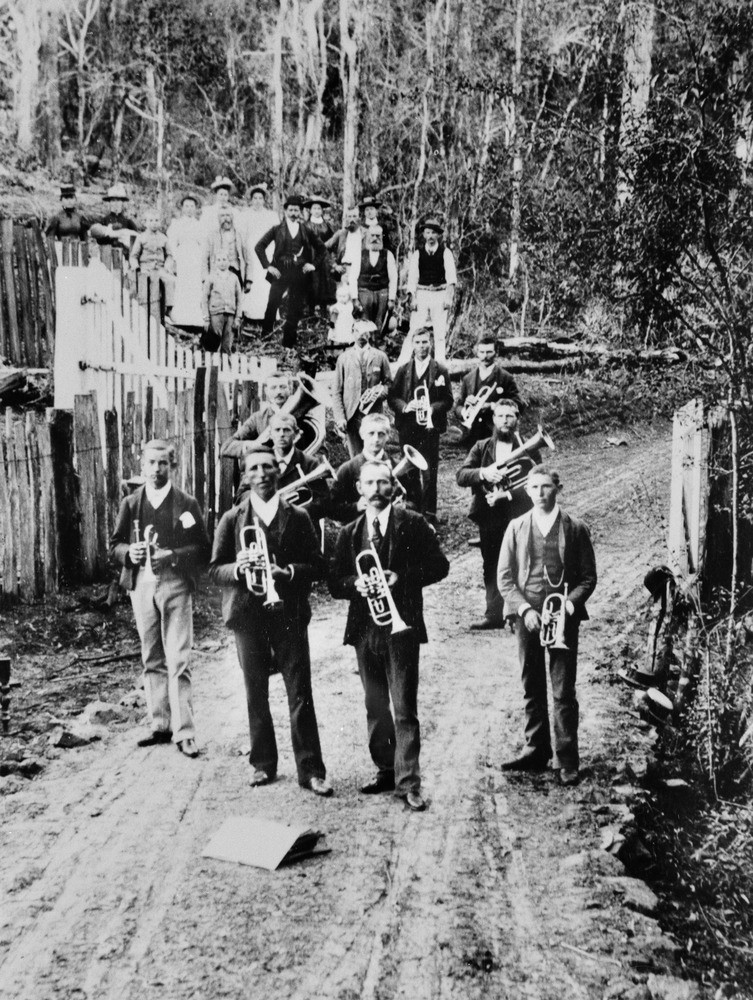
Engelsburg Lutheran Band in Kalbar, Queensland, 1895.
The Wirth brothers, Philipp, Peter, Jacob, and Johannes may have left home for good in order to avoid conscription. Many German bands went to England where German bands continued to be popular until the outbreak of World War I. The Wirth brothers appear to have been in England in the early 1850s and from there they decided to come to Australia, probably due to reports of gold discoveries. After living for a few years in Sydney the Wirth families began to travel around the country. When they weren't looking for gold the brothers performed as the band at agricultural shows, country race meetings and dance halls and also circuses. After following rumors of gold strikes from Victoria to North Queensland, at least two of the brothers, Peter and Johannes, settled for a time on the Darling Downs in the mid 1860s. They built a dance hall, made almost entirely from bark and advertised as Wirth's Music Hall, at Dalby where Johannes, his wife Sarah and brother Peter gave music and dance lessons.
While maintaining this base in the Downs, the brothers continued to travel and perform and it was during this period that they had a memorable encounter with the famous bushranger known as Captain Thunderbolt. There are a number of versions of this encounter which vary considerably in the details. This report is from the Clarence and Richmond Examiner and New England Advertiser of March 31 1868.
The highwayman Ward, better known as Thunderbolt, or as he now styles himself King of the Forest, visited the residents of Tenterfield, and was present on Tenterfield course, during the late races, taking his notes as to who was likely to possess the most cash; and then apparently bidding them adieu, but only to await his time, for the following day he stuck up the Maryland mailman, opening the bags, but finding nothing of any value, he contented himself by carrying off a few newspapers ; he next stuck up the German band, easing them all of their watches, and £16 in money; after which he came upon two travellers, from whom he took £6 ; and last, though not least, Mr. N. Hart, the owner of the racehorse Minstrel, whilst on his way home, with his winnings, and robbed him of £105, all in notes.
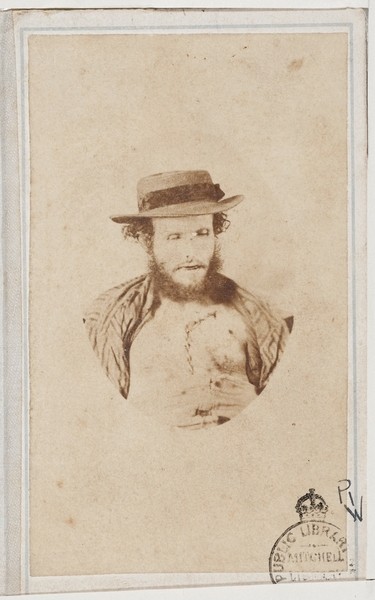
Frederick Ward, aka Captain Thunderbolt, after he was killed by Constable Walker, 1870
A number of versions mention Thunderbolt insisting on a concert and even conducting the music with his revolver and others have Thunderbolt returning the money after making his big haul from the racehorse owner. This is how Philip Wirth describes the event in his autobiography, The life of Philip Wirth.
All the rangers were not of this type fortunately, as was proved when my father met Thunderbolt, near Tenterfield, while carrying £70 which he intended sending to my mother in Dalby, Queensland. My father pleaded with the man not to take the money as my mother was destitute and would be in dire straits if he were unable to assist her. Thunderbolt apologised for taking the money, explaining that he was in urgent need of funds, but promised to return it to my father if he would call at the Post Office in Warwick as he was passing through the town. My father had no faith in the outlaw’s promises, but to his delight, found when he arrived at Warwick, that Thunderbolt had kept his word – and my mother was saved from starvation.
There is a more colourful but probably not very accurate account from the Singleton Argus published in 1943 and written by George S Crampton. This account is coloured by WWII anti-German sentiment and paints the band as timid souls.
As they neared Goonoo Goonoo Gap, a solitary horseman rode out of the bush and halted in front of the party. He was a big man, and he sat easily on his magnificent bay horse. "Come down out of that, and let's have a look at you!" he bawled at the trembling Teutons. Fearfully they climbed out, bringing their instruments with them, and the stranger chuckled as he took in the woebegone group with its big drum and array of brass instruments.
This is markedly at odds with Philip Wirth's description of his father.
My father, in addition to his other gifts was one of the strongest men of the period, but he did not care for circusing. He considered that there was not enough money in it and that his band which he had gathered together some time before and which was, as the result of his great talent as a conductor, in great demand for balls, parties and processions, was a better paying proposition altogether.
Johannes may not have cared for 'circusing' but this did not stop him from joining up with Ashton's Circus when they passed through Dalby in 1870. He later brought his four sons John, Henry, Philip and George to join him. A family history of the Wirths The travelling Wirth family suggests that the Wirth family taught Ashton circus music, while the circus taught the Wirth brothers to ride and tumble. By 1873 the family were in Rockhampton where they went into partnership with circus owner William Barlow. After Barlow's retirement the Wirths bought some of his animals and wagons. They continued to travel, performing as musicians, travelling with other circuses or putting on their own small shows. After a Japanese troupe joined them in Tamworth they started to put on a show billed as Wirths' Star Troupe of Varieties. In these early days they were sometimes short of material for the show and would fill it out with spectacular cornet solos and duets. In a reminiscence published in Wirths' souvenir, a pamphlet published by the circus in 1933, Philip Wirth describes his brother John as the 'Melba of the cornet' and claims the world has never known such a cornet player. Those early days of circus touring were sometimes filled with difficulties and danger and required courage and ingenuity as illustrated in this extract from Philip Wirth's autobiography.
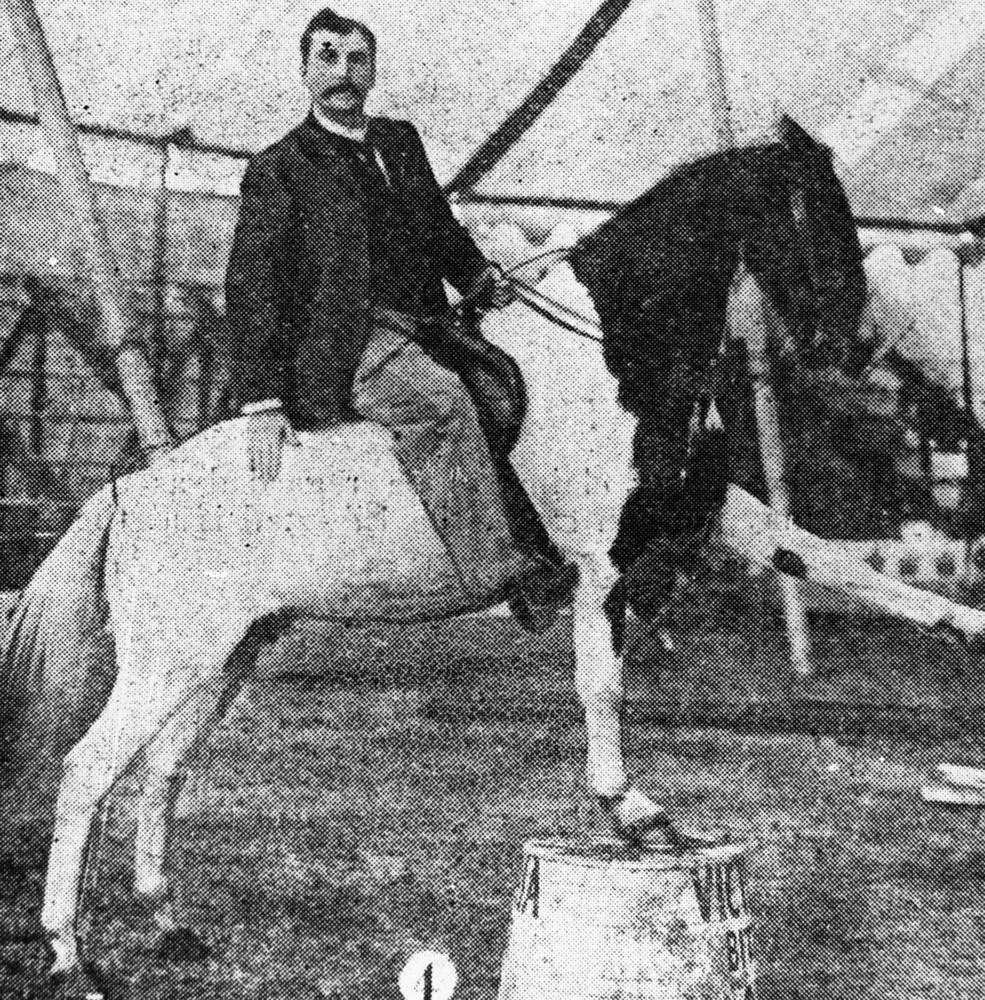
Philip Wirth astride a horse that is performing a trick under the circus big top, ca. 1903
The Warrego River was now in flood and was running about 20 miles wide, but with the exception of the course proper, the water was only about three feet deep, so that we were able to proceed slowly until we reached the banks of the actual river. The stream was over 50 yards wide and quite 20 feet deep, but we decided that we could not afford to wait for the river to go down, so we devised a scheme by which we could get all the equipment across without delay. My brother John and I swam the swollen river with sash lines in our mouths, and though the current was so strong that it carried us about 80 yards downstream, we managed to get ashore on the opposite bank. Then we were able to drag across the pulleys and ropes which were used in the erection of the Big Top, and attach them to a great gum tree. We were then able to pull the wagons across the river bed. It was a strange sight to see the wagons, five of which had covered tops, disappear down into the river on one side out of sight, and then later slowly emerge on the other. We then set to work to make rafts of the wagon seats, on which we floated the canvas and other gear across. The whole procedure took two days, and as we were forced to work almost naked, the mosquitoes and sand flies were able to add their stings to the tortures of sunburn. We had all crossed safely and were enjoying our evening meal with great satisfaction, when tragedy struck us unawares. While we were eating, there was a sudden thunderstorm, and one of our men was killed by lightning. I will always remember the ghastly experience of seeing the poor fellow crumpled up in a second. I have been afraid of lightning ever since.
In 1880 the Wirths organised their own circus performances at Haymarket Reserve in Sydney, beginning what was to become world famous as Wirths' Circus, but in the same year their father Johannes died as a result of a medical accident. The four brothers carried on by themselves and their sisters Madeline and Marizles also joined them in the circus. By 1889 the Wirths' Circus had grown considerably and was touring New Zealand when Harry Wirth, returning from a trip to America, brought back a troupe of wild west performers and, inspired by seeing Barnum and Bailey's famous circus, persuaded his brothers to set up their own three ringed circus.
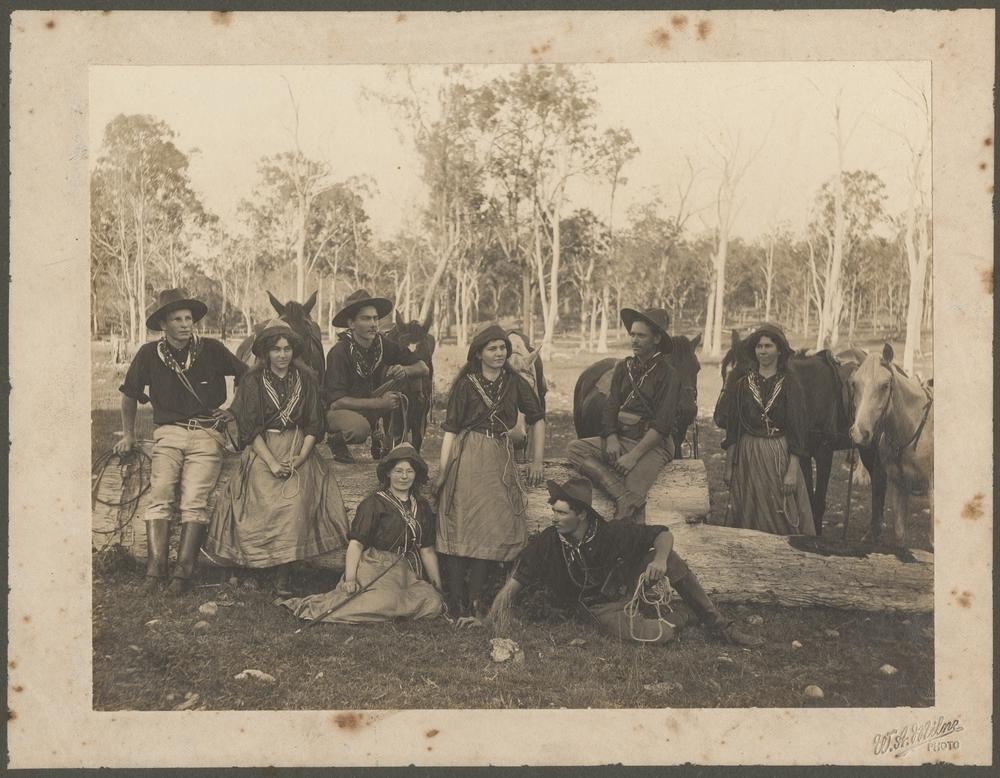
Wild West troupe in Maryborough, 1913
In 1893 depression hit Australia and many banks failed. The Wirth brothers responded by taking their circus overseas, touring South Africa and South America before heading to England where they stages a successful tour before setting up in a permanent building in Southport where they performed for Edward, Prince of Wales (later Edward VII). In all the world tour took seven years and when they returned is September 1900 they found they had almost been forgotten in their home country.
They soon revived their reputation and Wirths' Circus became for many years a household name in all parts of Australia. The Wirths set up permanent premises in Melbourne, at Olympia Park and in Sydney they converted an old market building into Wirth's Hippodrome in the Haymarket, which later became the Capitol Theatre. Wirths' Circus was always in Melbourne for the Melbourne cup, where they started a tradition of presenting a gold-mounted whip to the winning jockey, and in Sydney for the Easter show. They came to Brisbane annually in August at the time of the Exhibition.
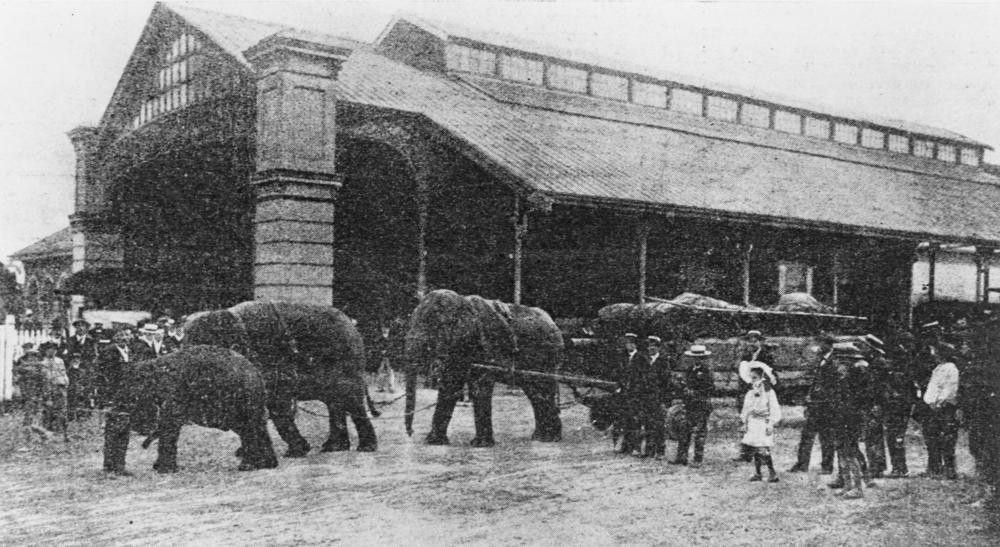
Wirth Brothers' elephants drawing the circus properties from Roma Street Railway Station, 1905
The Wirth brothers were superb athletes and talented and versatile circus performers. Philip Wirth describes how his brother George, before breaking his knee in an accident, "was universally acknowledged as the greatest all-round circus performers in the world."
He was able to do an entire performance of two and a half hours alone, and was able in all to do 23 acts, viz:- Polandric Ladder, Balancing on his Head, Contortionist, Clubs, Tumbling, Acrobats, Horizontal Bars, Single Trapeze, Rings, Somersault Act on Horse, Jockey Act, Seven Horse Act, Two Horse Carrying Act, One Horse Carrying Act, Leaps, Indian on Horse, Perch, Bob Walker, Bar Act, Two Horse Hurdle Act and Three Clown Entrees.
Philip Wirth himself was able to perform prodigious leaps and was a masterful horse trainer. In the early days of the circus many of the acts involved very real danger of serious injury.
I was about 18 years of age at this time and experienced a very unpleasant accident while we were playing in Penola. We always opened our programme with an act in which I leapt over horses and bayonets, but while we were in this town we bought a new horse. We put him last in line, between the 19th horse and the straw matress on which I made my final landing. We thought that he would give no trouble there, and advertised the act as the ‘Leap for Life over Twenty Horses'. However, just as I was about to drop on the the matress, after clearing the horses, the new one saw me and reared. His head struck my spine with terrific force, so that I thought for some time my back was broken, but after my brother had rubbed the injured part with embrocation, the pain lessened.
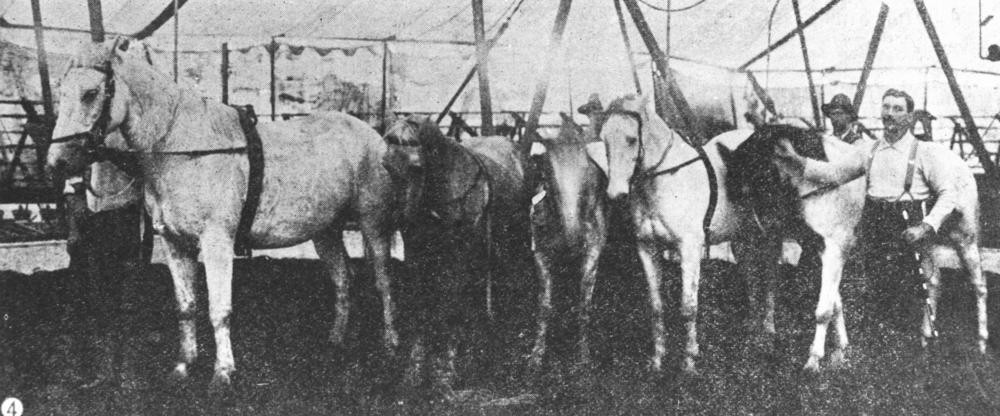
Philip Wirth and his educated horses in Brisbane, 1903
Philip Wirth continued to manage the circus after his brother George retired in 1930, until his death at the age of 73 in 1937, and his children continued to run the circus until it was forced to close in 1963.
Circuses have featured in some of our earlier blog posts which may also be of interest.
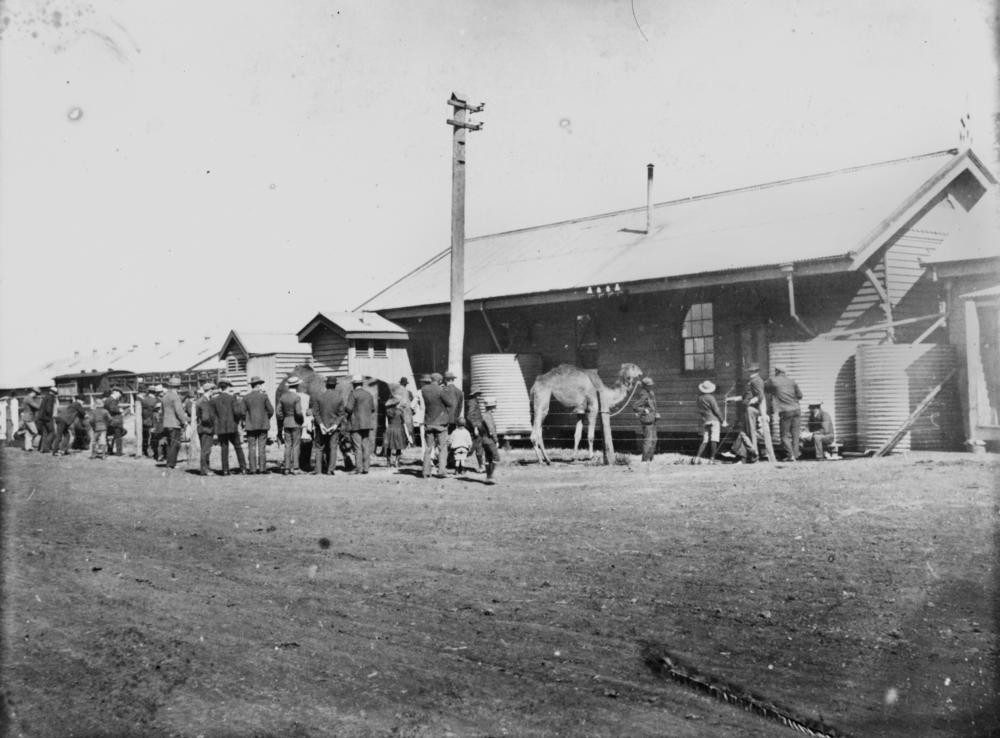
Comments
Your email address will not be published.
We welcome relevant, respectful comments.